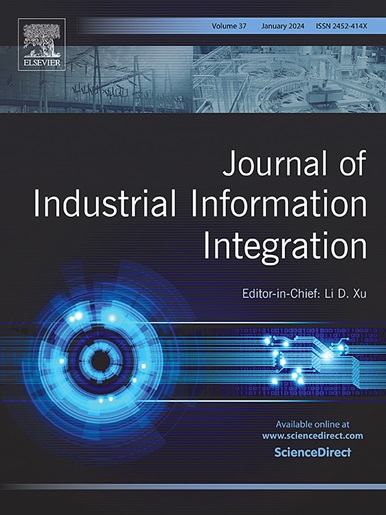群无人机在未知三维环境下的两阶段着陆方法
IF 10.4
1区 计算机科学
Q1 COMPUTER SCIENCE, INTERDISCIPLINARY APPLICATIONS
引用次数: 0
摘要
在未知环境中自主着陆的能力是实现群无人机高智能的关键。这种能力要求无人机必须具备四个功能:自主选择着陆点、个体间相互协调、实时轨迹规划和全局优化决策。然而,由于群系统的复杂性和不确定性,这些模块并没有充分集成到现有的方法中。为了解决这些挑战,本文提出了一个使用两阶段方法的完整的群无人机着陆过程框架。具体来说,候选着陆点是由复杂环境以一种从粗到精的方式自动生成的。在高空飞行阶段,将群无人机作为一个整体,引导其向动态目标点飞行,并通过所设计的优化成本模型对目标点进行更新。此外,引入虚拟力模型来保持无人机内部编队与外部障碍物之间的平衡。在接近着陆阶段,提出了一种基于快速探索随机树(RRT)的着陆模型,规划最终着陆路径,有效避免了与其他无人机和地面障碍物的碰撞。所提出的方法在实际场景中进行了测试,并通过不同的飞行阶段进行了评估。综合实验结果表明,该方法在着陆点选择和渐进式蜂群路径规划等多个场景下均具有良好的着陆性能。该系统还支持工业信息集成,为复杂环境中的蜂群无人机提供协调感知、通信和决策。本文章由计算机程序翻译,如有差异,请以英文原文为准。
A two stage-based approach for swarm UAVs landing in unknown 3D environments
The ability to autonomously land in unknown environments is essential for achieving high intelligence of swarm unmanned aerial vehicles (UAVs). Such a capability requires that UAVs necessitate four functions: autonomous selection of landing sites, mutual coordination among the individuals, real-time trajectory planning, and global optimization decision-making. However, these modules are not sufficiently integrated into existing methods due to the complexity and uncertainty of swarm system. To address these challenges, this paper proposes a completed landing process framework for swarm UAVs using a two-stage approach. Specifically, the candidate landing sites are generated automatically from the complex environment in a coarse-to-fine manner. At the high-altitude flying stage, the swarm UAVs are considered as a whole and directed towards dynamic target points, which are updated by the designed optimization cost model. Additionally, a virtual force model is introduced to maintain the balance between the interior formation of the UAVs and the external obstacles. At the approaching landing stage, a novel landing model based on rapidly exploring random tree (RRT) is proposed to plan the final landing paths, which can effectively avoid collisions with other UAVs and ground obstacles. The proposed method is performed in real-world scenarios and estimated via different fly stages. The results of comprehensive experiments demonstrate that the proposed approach achieves good landing performance in multiple scenarios, including landing site selection and progressive swarm path planning. This also supports industrial information integration by enabling coordinated sensing, communication, and decision-making for swarm UAVs in complex environments.
求助全文
通过发布文献求助,成功后即可免费获取论文全文。
去求助
来源期刊

Journal of Industrial Information Integration
Decision Sciences-Information Systems and Management
CiteScore
22.30
自引率
13.40%
发文量
100
期刊介绍:
The Journal of Industrial Information Integration focuses on the industry's transition towards industrial integration and informatization, covering not only hardware and software but also information integration. It serves as a platform for promoting advances in industrial information integration, addressing challenges, issues, and solutions in an interdisciplinary forum for researchers, practitioners, and policy makers.
The Journal of Industrial Information Integration welcomes papers on foundational, technical, and practical aspects of industrial information integration, emphasizing the complex and cross-disciplinary topics that arise in industrial integration. Techniques from mathematical science, computer science, computer engineering, electrical and electronic engineering, manufacturing engineering, and engineering management are crucial in this context.
 求助内容:
求助内容: 应助结果提醒方式:
应助结果提醒方式:


